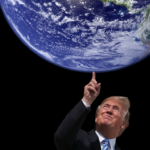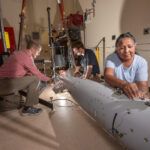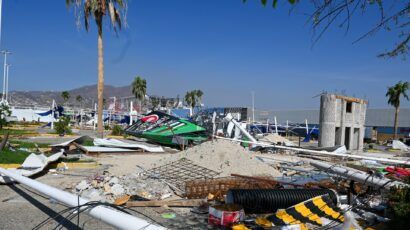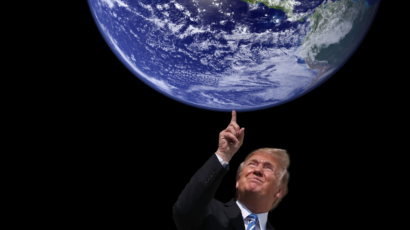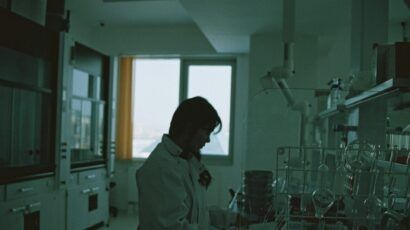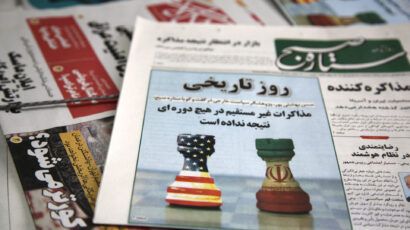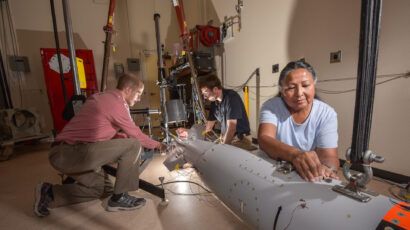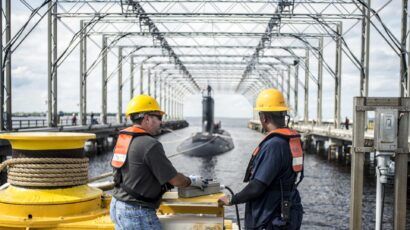“Doomsday Clock” Moves Two Minutes Closer To Midnight
By Bulletin Staff | January 17, 2007
On January 17, 2007, the Bulletin of the Atomic Scientists moved the minute hand of the Doomsday Clock two minutes closer to midnight. It is now 5 minutes to midnight. Reflecting global failures to solve the problems posed by nuclear weapons and the climate crisis, the decision by the Bulletin’s Board of Directors was made in consultation with the Bulletin’s Board of Sponsors, which includes 18 Nobel Laureates.
On January 17, 2007, the Bulletin of the Atomic Scientists moved the minute hand of the Doomsday Clock two minutes closer to midnight. It is now 5 minutes to midnight. Reflecting global failures to solve the problems posed by nuclear weapons and the climate crisis, the decision by the Bulletin's Board of Directors was made in consultation with the Bulletin's Board of Sponsors, which includes 18 Nobel Laureates.
In a statement supporting the decision to move the hand of the Doomsday Clock, the Bulletin Board focused on two major sources of catastrophe: the perils of 27,000 nuclear weapons, 2,000 of them ready to launch within minutes; and the destruction of human habitats from climate change.
The Bulletin statement explains: "We stand at the brink of a second nuclear age. Not since the first atomic bombs were dropped on Hiroshima and Nagasaki has the world faced such perilous choices. North Korea's recent test of a nuclear weapon, Iran's nuclear ambitions, a renewed emphasis on the military utility of nuclear weapons, the failure to adequately secure nuclear materials, and the continued presence of some 26,000 nuclear weapons in the United States and Russia are symptomatic of a failure to solve the problems posed by the most destructive technology on Earth."
It continues: "The dangers posed by climate change are nearly as dire as those posed by nuclear weapons. The effects may be less dramatic in the short term than the destruction that could be wrought by nuclear explosions, but over the next three to four decades climate change could cause irremediable harm to the habitats upon which human societies depend for survival."
Stephen Hawking, a Bulletin sponsor, professor of mathematics at the University of Cambridge, and a fellow of The Royal Society, said, "As scientists, we understand the dangers of nuclear weapons and their devastating effects, and we are learning how human activities and technologies are affecting climate systems in ways that may forever change life on Earth. As citizens of the world, we have a duty to alert the public to the unnecessary risks that we live with every day, and to the perils we foresee if governments and societies do not take action now to render nuclear weapons obsolete and to prevent further climate change."
Kennette Benedict, the Bulletin's executive director, said, "As we stand at the brink of a second nuclear age and at the onset of unprecedented climate change, our way of thinking about the uses and control of technologies must change to prevent unspeakable destruction and future human suffering."
Sir Martin Rees, president of The Royal Society, professor of cosmology and astrophysics, master of Trinity College at the University of Cambridge, and a Bulletin sponsor, said, "Nuclear weapons still pose the most catastrophic and immediate threat to humanity, but climate change and emerging technologies in the life sciences also have the potential to end civilization as we know it."
Lawrence M. Krauss, professor of physics and astronomy at Case Western Reserve University and a Bulletin sponsor, said, "In these dangerous times, scientists have a responsibility to speak truth to power especially if it might provoke actions to reduce threats from the preventable technological dangers currently facing humanity. To do anything else would be negligent."
Amb. Thomas Pickering, a Bulletin director and co-chair of the International Crisis Group, said, "Although our current situation is dire, we have the means today to successfully address these global problems. For example, through vigorous diplomacy and international agencies like the International Atomic Energy Agency, we can negotiate and implement agreements that could protect us all from the most destructive technology on Earth–nuclear weapons."
Other highlights from the Bulletin's statement include:
- "The second nuclear era, unlike the dawn of the first nuclear age in 1945, is characterized by a world of porous national borders, rapid communications that facilitate the spread of technical knowledge, and expanded commerce in potentially dangerous dual-use technologies and materials. The Pakistan-based network that provided nuclear technologies to Libya, North Korea, and Iran, is an example of the new challenges confronting the international community."
- "Sixteen years after the end of the Cold War, following substantial reductions in nuclear weapons by the United States and Russia, the two major powers have now stalled in their progress toward deeper reductions in their arsenals."
- "More than 1,400 metric tons of highly enriched uranium and approximately 500 tons of plutonium are distributed worldwide at some 140 sites, in unguarded civilian power plants and university research reactors, as well as in military facilities."
- "Global warming poses a dire threat to human civilization that is second only to nuclear weapons. Through flooding and desertification, climate change threatens the habitats and agricultural resources that societies depend upon for survival. As such, climate change is also likely to contribute to mass migrations and even to wars over arable land, water, and other natural resources."
- "The prospect of civilian nuclear power development in countries around the world raises further concerns about the availability of nuclear materials. Growth in nuclear power is anticipated to be especially high in Asia, where Japan is planning to bring on line five new plants by 2010, and China intends to build 30 nuclear reactors by 2020."
- "Several factors are driving the turn to nuclear power–aging nuclear reactors, rising energy demands, a desire to diversify energy portfolios and reduce reliance on fossil fuels, and the need to reduce carbon emissions that cause climate change. Yet expansion of nuclear power increases the risks of nuclear proliferation."
The Bulletin statement also outlines a number of steps that, if taken immediately, could help to prevent disaster, including the following:
- Reduce the launch readiness of U.S. and Russian nuclear forces and completely remove nuclear weapons from the day-to-day operations of their militaries.
- Reduce the number of nuclear weapons by dismantling, storing, and destroying more than 20,000 warheads over the next 10 years, as well as greatly increasing efforts to locate, store, and secure nuclear materials in Russia and elsewhere.
- Stop production of nuclear weapons material, including highly enriched uranium and plutonium–whether in military or civilian facilities.
- Engage in serious and candid discussion about the potential expansion of nuclear power worldwide. While nuclear energy production does not produce carbon dioxide, it does raise other significant concerns, such as the health and environmental hazards of nuclear waste, the production of nuclear materials that can be diverted to the production of weapons, and the safety and security of the plants themselves.
Read the full statement here (subscription required).
Together, we make the world safer.
The Bulletin elevates expert voices above the noise. But as an independent nonprofit organization, our operations depend on the support of readers like you. Help us continue to deliver quality journalism that holds leaders accountable. Your support of our work at any level is important. In return, we promise our coverage will be understandable, influential, vigilant, solution-oriented, and fair-minded. Together we can make a difference.


